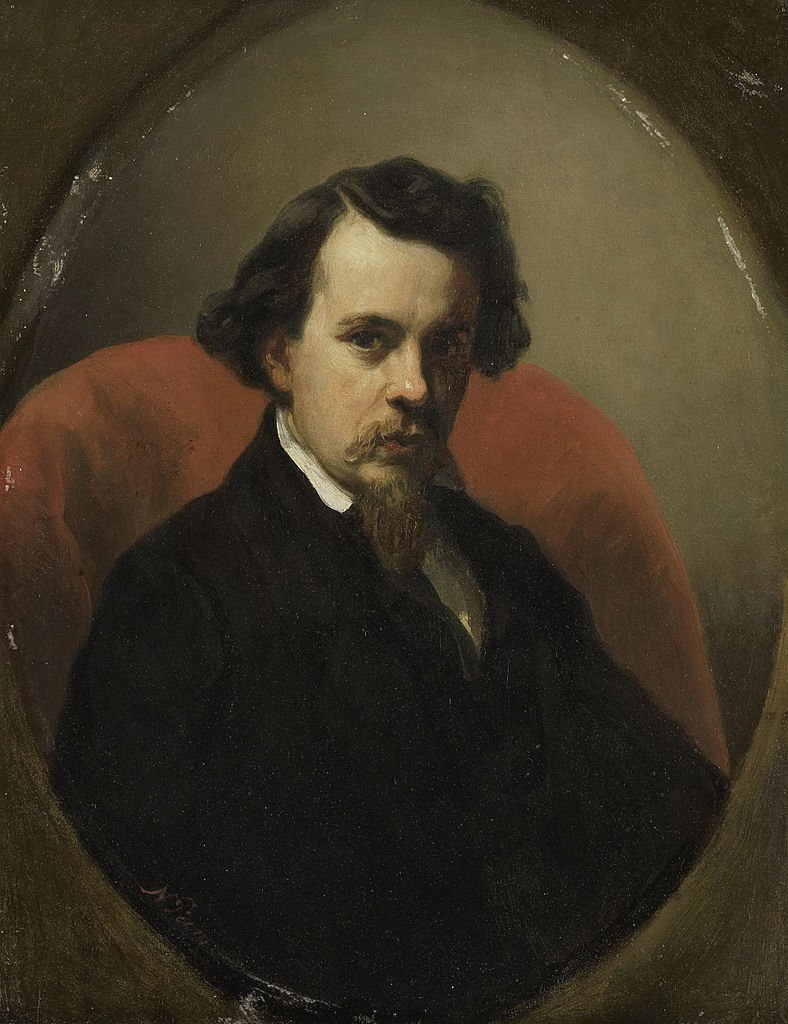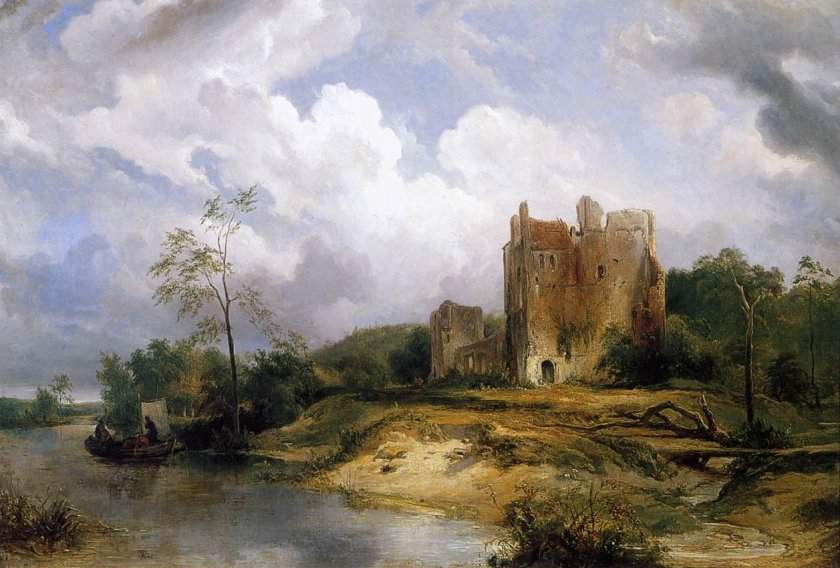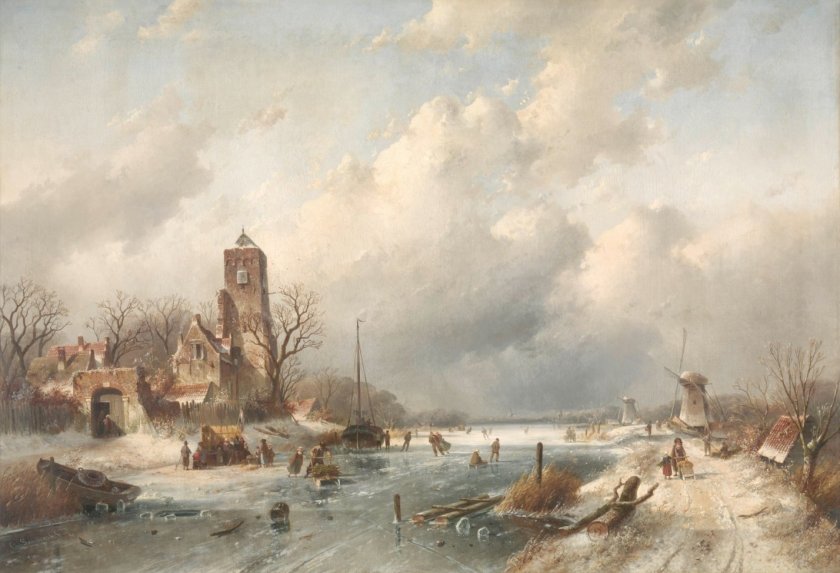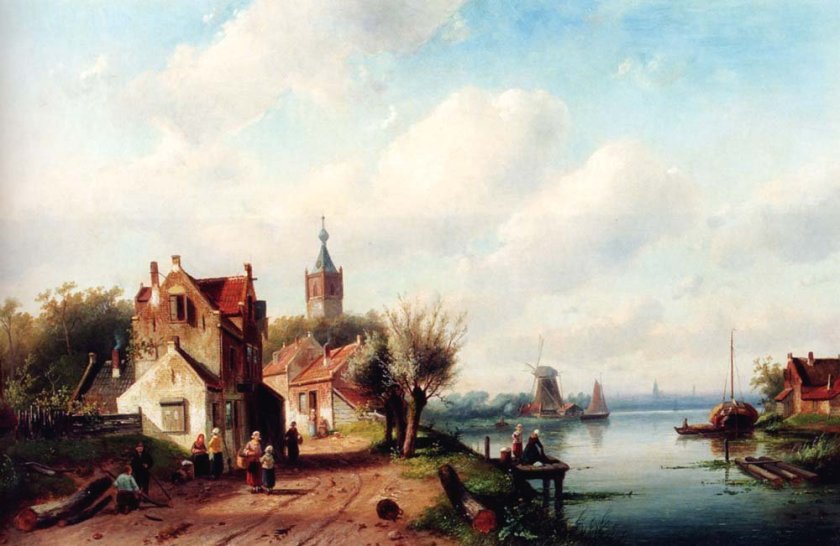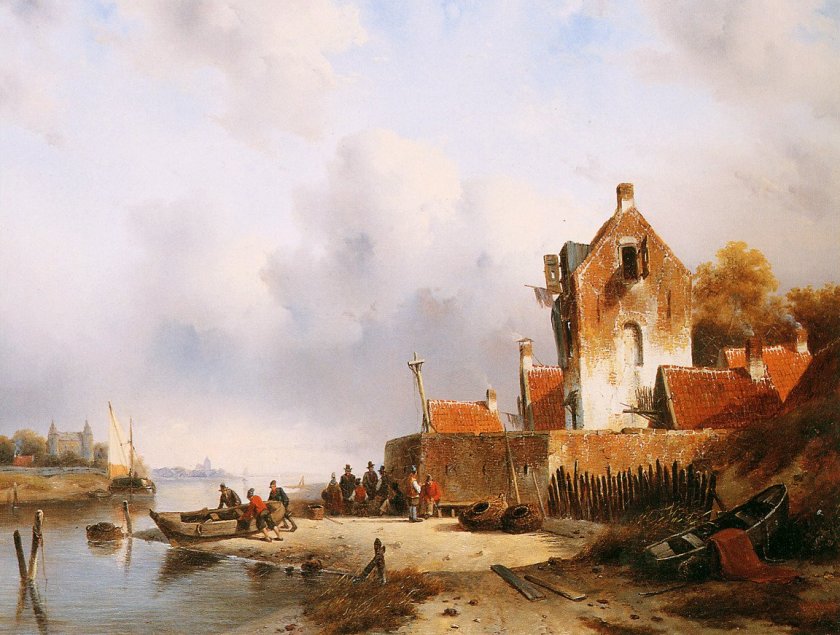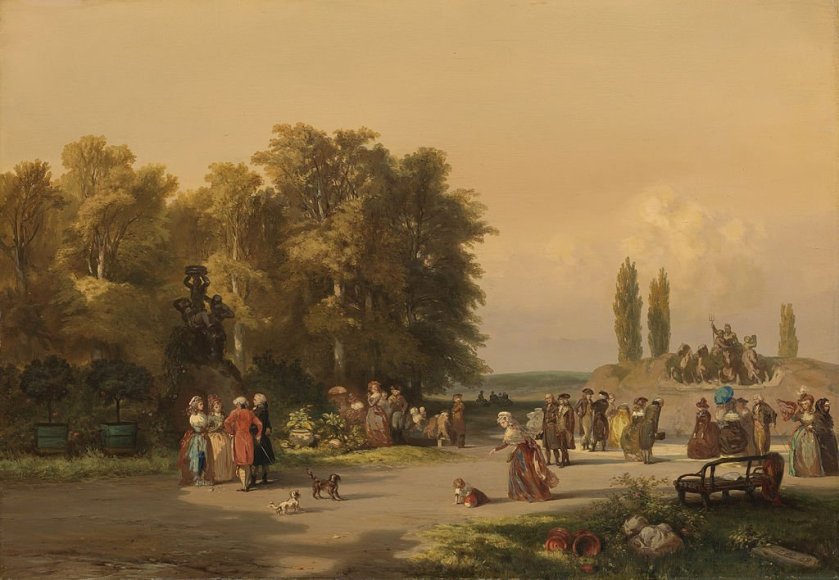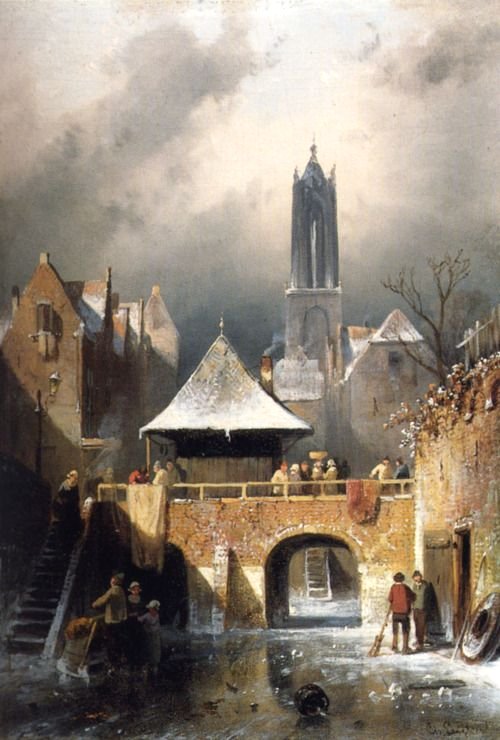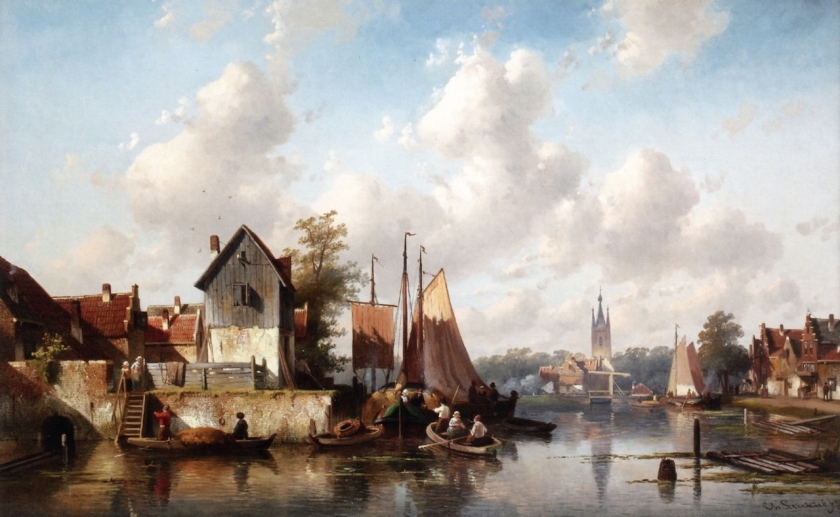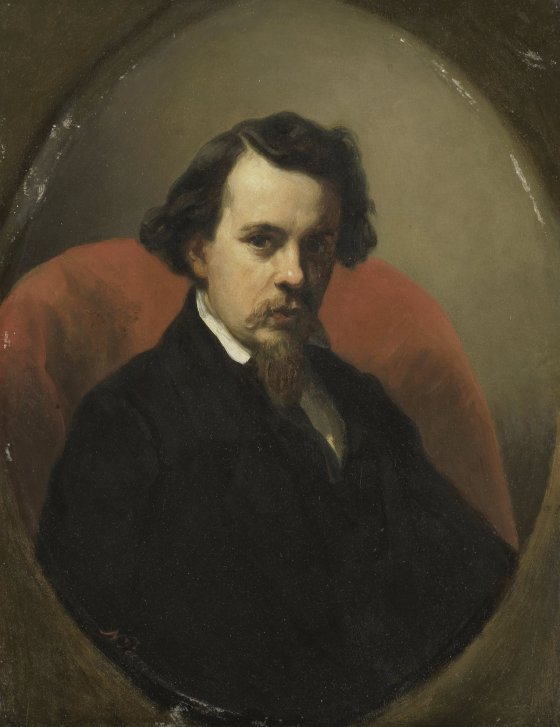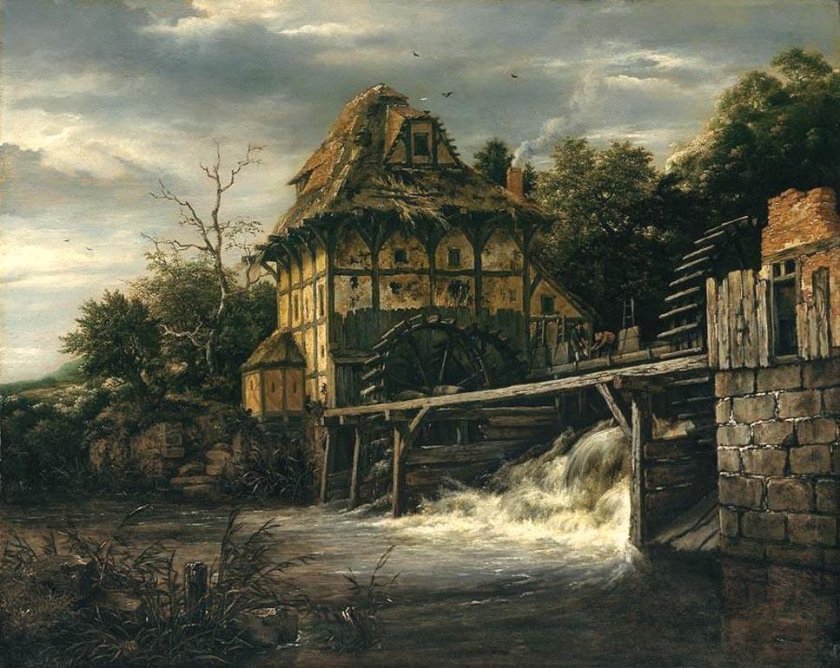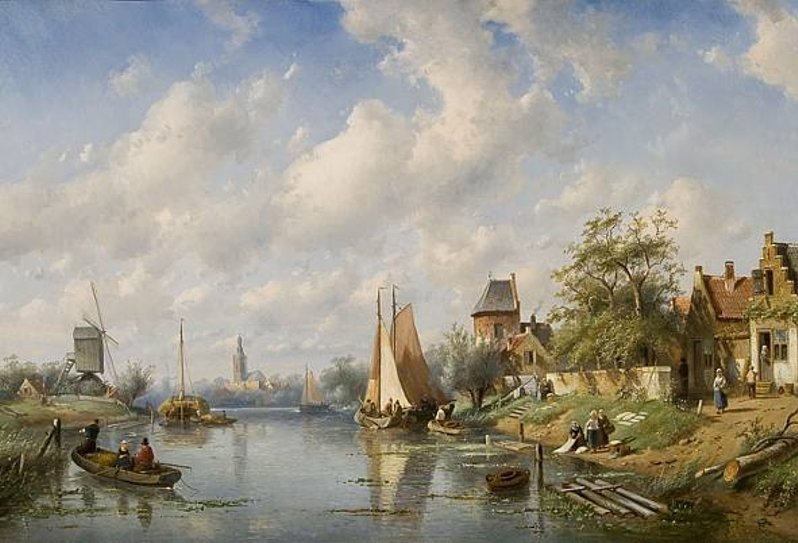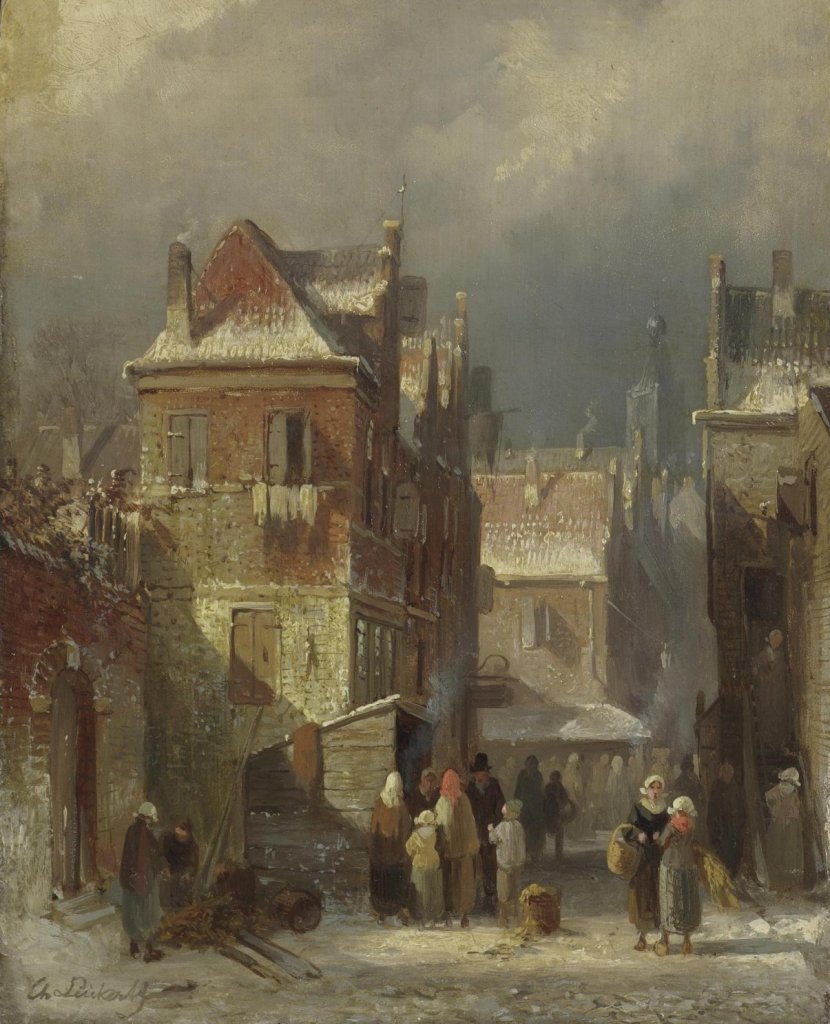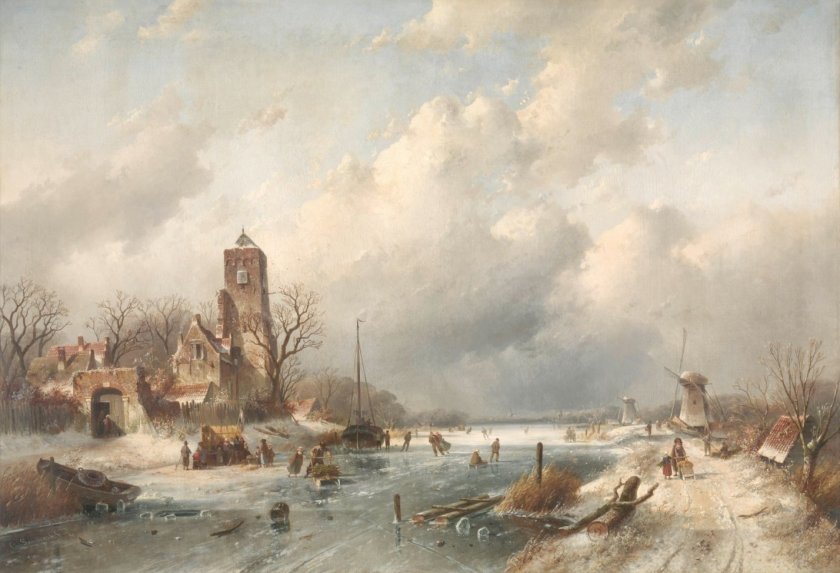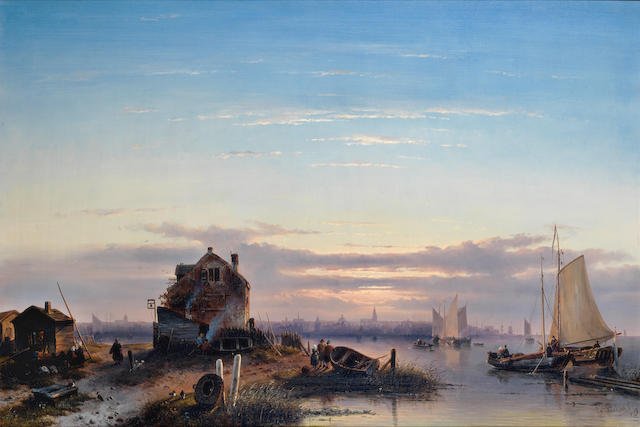
…………………..In hindsight, Leickert’s decision to move away from The Hague in 1848 and base himself in Amsterdam was probably a brave decision but it paid off as the next twenty years are looked upon as his best period. The finely drawn details in his works and his use of the chiaroscuro technique was looked upon by the critics as masterful. One of the first paintings he did after his move to Amsterdam was View on the Ij with Amsterdam in the Background. The setting is a view from the grounds around the tollgate on the north shore of the IJmuiden, a body of water, formerly a bay, in the Dutch province of North Holland. It was a favourite place of artists, and the Amsterdam public were always willing to buy such depictions.
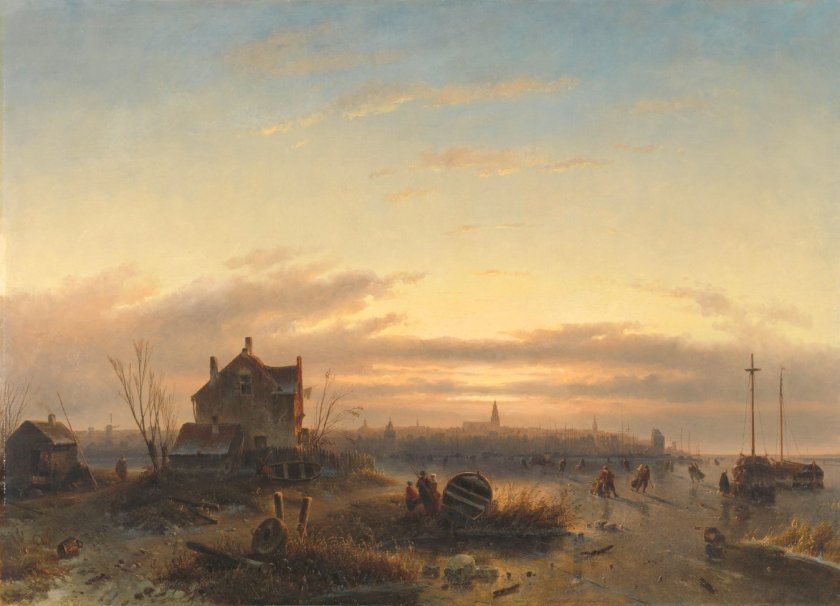
Many artists depicted similar scenes and in fact Leickert completed several versions of this painting, including one with the same view but in a winter setting, entitled Winter op het IJ voor Amsterdam (Amsterdam in the Winter with the Setting Sun), which can be seen at the Rijksmuseum. It was painted from the same viewpoint at slightly different stages of sunset. Both paintings depict the same barn, house, and figure group to the left-hand side. However, the most notable difference is that the Rijksmuseum painting is set during winter and it depicts people skating on the frozen river. These two works are masterpieces in the way they depict a highly detailed analysis of light and colour, and the atmospheric fluctuations between the seasons and times of day. These were aspects of overriding importance to Leickert. Leickert left his mentor Schelfhout when he moved from The Hague to Amsterdam and began to be “his own man” as far as his artwork was concerned. An art critic at the 1850 Rotterdam exhibition which included Leickert’s winter variation of the painting commented on the work and Leickert’s newly-found independence:
“…Leickert has long managed to situate himself outside the school of Schelfhout – that is, to learn to observe with his own eyes. His view of Amsterdam in the Winter with the Setting Sun is one of those paintings at which one must gaze for a long time to recover, as it were all that is surprising and alluring about a sunset in December. The sky has a particularly divine effect, being harmoniously rendered and incontrovertibly one of the most handsome of the Exhibition…”
The “divine effect” mentioned by the critic alludes to the strong Romantic evening light depicted in the painting. In the work look how Leickert has the setting sun lighting up and colouring the sky in red, orange, and lilac tints. The setting of the painting was typical of Leickert. He often chose riverbank scenes which were full of human activity. He himself often lived in houses which were close to river or canal banks, such as the Rokin, in the centre of Amsterdam.
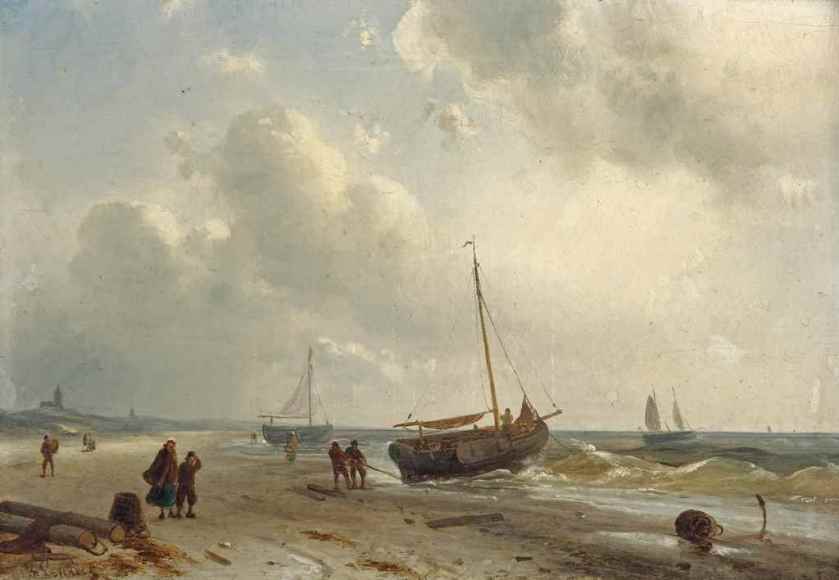
Having lived in both The Hague and Amsterdam he would have visited the coast on many occasions especially the fishing village of Scheveningen. Although Leickert will always be remembered for his cityscapes and landscapes he did paint coastal scenes. One such work was Fisherfolk on the beach near Scheveningen, the setting and type of depiction was very popular with artists.
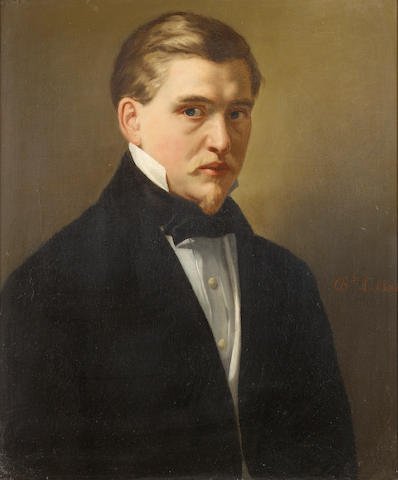
We think of Leickert as a painter of enchanting scenes whether it be a riverscape, landscape or cityscape but the one facet of his talent is somewhat surprising – that of a portraitist, although he never contemplated this genre as a professional alternative to landscape painting. His 1852 Self Portrait was a triumph of tonal modulations used in the facial depiction. Look at how Leickert use of light on the skin and dark areas, as well as the clever way in which he shapes the background by the use of varying tones. What is Leickert trying to achieve with this portrait? What does he want us to take away after viewing the painting? Look at the way he is both well-groomed and well-dressed. Look at his facial expression – serious and somewhat imposing. What he has achieved with this depiction is a portrait of a professional and successful man, one who has gained success professionally as an artist and attained social acceptance. There is even a hint of elitism in his demeanour.
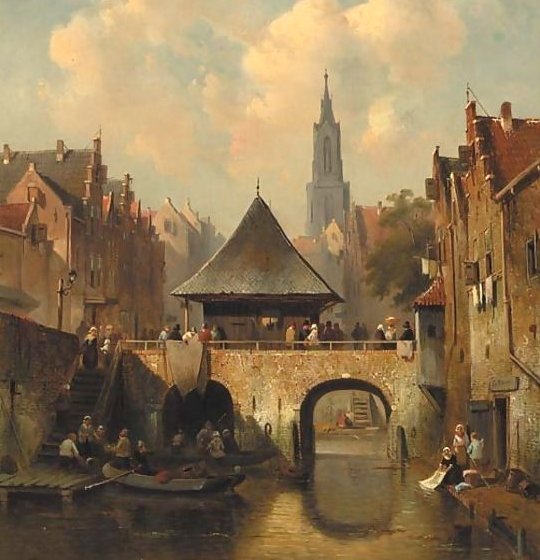
Leickert’s landscapes and cityscapes focused on life as it was and he rarely added to his depictions anything which signalled the changes that were taking place. He shied away from modernity. His paintings concentrated on picturesque towns and ageless, unspoilt landscapes. Such depictions had the wistful feeling of Romanticism.
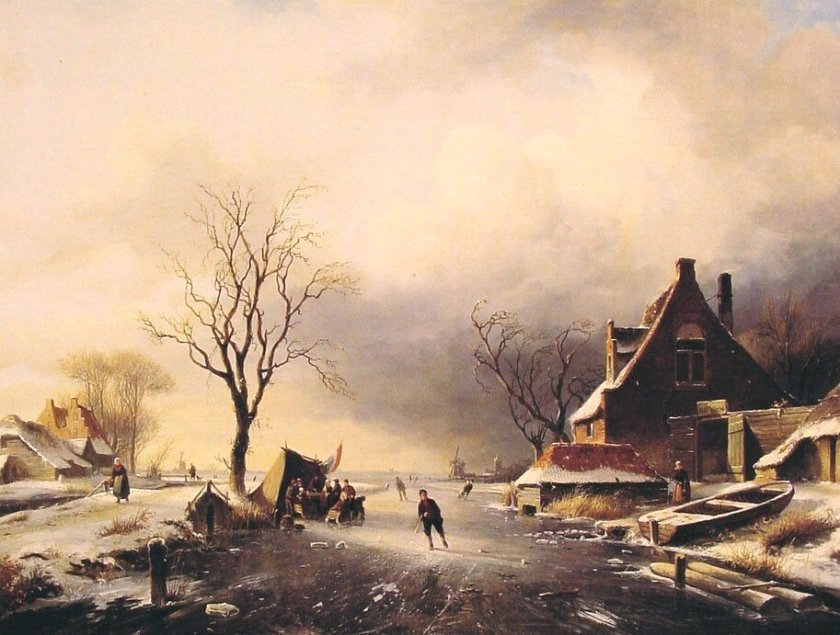
I love his portrayal of the frontages of the old Dutch streets. I love how he instils in the viewer a sense of warm cosiness and contentment as we look at a winter scene with the refreshment stall on the ice. An example of this is his 1892 painting entitled At the ‘koek en zopie’ in a Panoramic Winter Landscape.
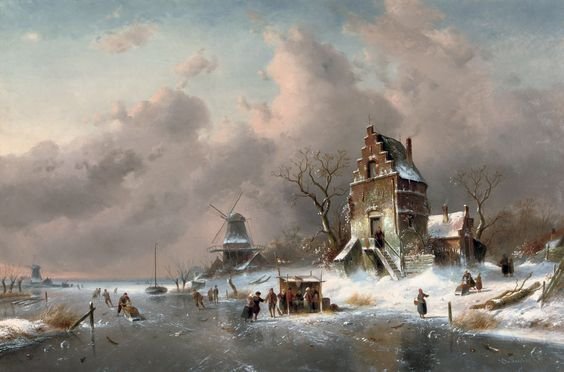
Koek en zopie (cookies and hooch!) were refreshment stalls on the ice which sold cakes and biscuits as well as hot alcoholic drinks. The strange quirk of why these stalls were on the ice and not on the land was because if they had been positioned on the mainland there would have been a tax levied on their products. Nowadays these small stalls sell drinks such as split pea soup and hot chocolate. Another painting by Leickert which featured the koek en zopie was entitled Numerous Skaters near a koek-en-zopie on a Frozen Waterway by a Mansion. On the frozen water, we see villagers engaged in their daily routines. For some, whom we see skating, it is leisure time whilst others in the depiction are using the ice to transport goods. A house with a snow-covered step gable can be seen on the right of the painting. This tall structure forms a vertical compositional element and is echoed in the two windmills and the mast of the small boat which appears to be stuck in the ice. Look at how Leickert has accurately depicted the ice with all the scratches in its surface made by the skaters and sleighs. Look at how Leickert has depicted the sky. It is masterful with variance of colours, different tones of pink, blue and grey added to which are the dark clouds. The warm colours for the sky contrasts and enhances the whiteness of the snow which emphasises the coldness of the winter day.
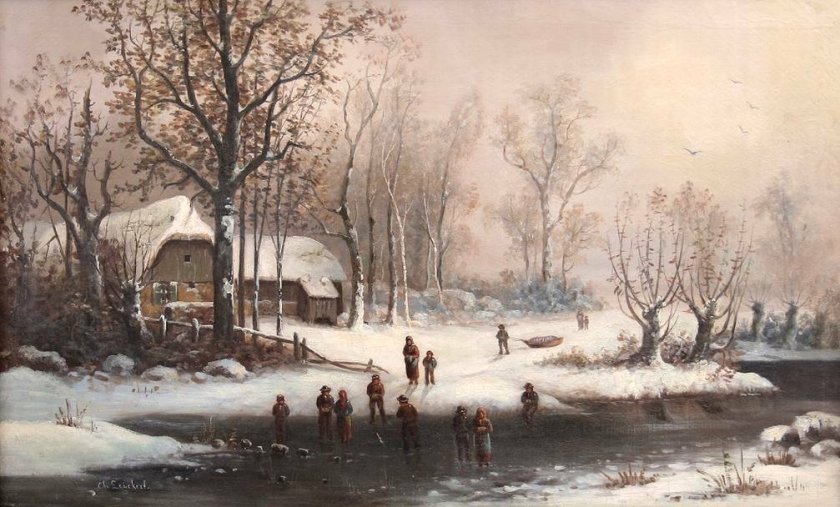
In 1859, forty-three-year-old Leickert leaves Amsterdam and travels to Germany where he journeyed down the Rhine valley calling at Rudesheim and later Mainz where he stayed for some time – time enough to meet, fall in love with, and on September 29th, within the year of their first meeting, marry thirty-six-year-old, Apollonia Schneider. The couple returned to the Netherlands in 1861, settling for a year in Frederikstraat in The Hague before returning to Amsterdam, where his drawings and paintings drew the attention of King Willem III.
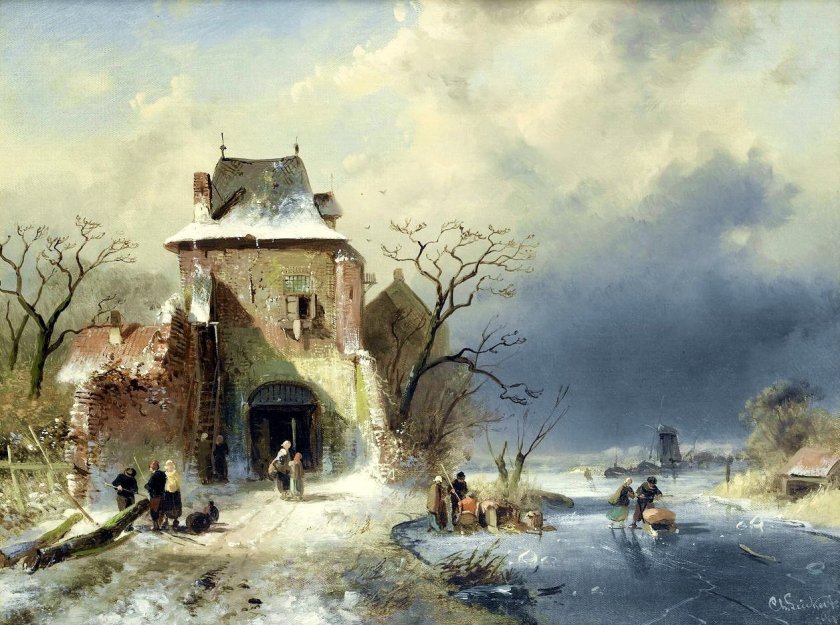
Over time Leickert’s paintings became less popular as they were beginning to be looked upon as old fashioned and the new painters of The Hague and Amsterdam could command prices three-times as high as his were sold for. In 1887, Leickert, then seventy-one years of age decided to end his artistic career, left The Netherlands, and returned with his wife to Mainz, where twenty-eight years earlier, they had married.
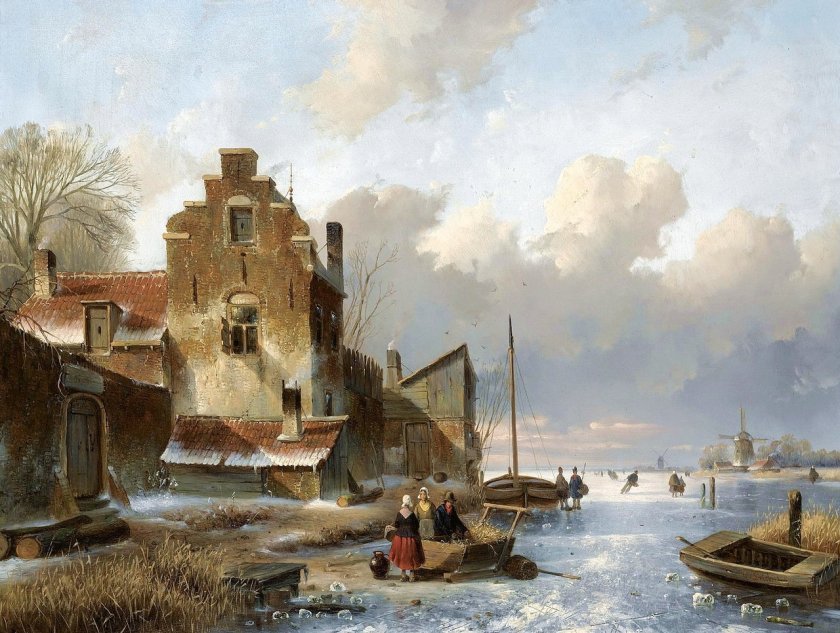
Charles Leickert died in Mainz on December 5th, 1907, aged ninety-one. His obituary notice stated he was a widower with no children and it is believed that his wife Apollonia had died a few years earlier. Leickert was a prolific artist producing approximately seven hundred paintings, of which he only exhibited about eight-five.
————————————————————————–
Most of the information for the three blogs on Charles Leickert came from excellent 1999 book entitled Charles Leickert 1816-1907: Painter of Dutch Landscape by Harry J Kraaij

